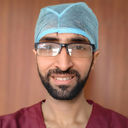Congenital Heart Disease Classification
Understand the classification of congenital heart disease and its significance for treatment, survival rates, and long-term health outcomes for affected individuals.

Written by Dr Sonia Bhatt
Last updated on 3rd Jul, 2025
Congenital Heart Disease Classification
Congenital heart disease (CHD) refers to heart and blood vessel conditions that are present from birth. These can range from simple structural defects, like small holes between heart chambers, to more complex abnormalities involving the heart valves or blood vessels. While some of these defects might not cause immediate problems, others can lead to serious complications, such as heart failure or arrhythmias.
Understanding how CHD is classified is essential because it helps guide treatment decisions. The severity of the defect determines whether immediate intervention is needed or if a more conservative approach is sufficient. Timely and accurate classification reduces complications and improves outcomes, enhancing the quality of life for those affected.
Types Of Congenital Heart Disease
Congenital heart defects can be classified based on their impact on oxygenation and blood flow. Some lead to visible oxygen deprivation, while others strain the cardiovascular system in less apparent ways.
Cyanotic Heart Defects
Cyanotic heart defects are a group of congenital heart diseases that result in reduced oxygen levels in the blood, causing a bluish discolouration of the skin, lips, and nails, known as cyanosis. These defects typically involve structural abnormalities that impede oxygen-rich blood flow to the body or allow oxygen-poor blood to mix with oxygenated blood.
Acyanotic Heart Defects
Acyanotic heart defects are congenital heart conditions where oxygen levels in the blood remain normal. However, abnormal blood flow or pressure within the heart can strain the cardiovascular system. These defects generally do not cause cyanosis but may lead to symptoms like heart murmurs, fatigue, or growth delays over time.
Types of Cyanotic Heart Defects
Cyanotic heart defects are among the most severe congenital heart conditions, often requiring urgent surgical intervention. They disrupt the flow of oxygen-rich blood, leading to life-threatening complications if left untreated. Below are two major types of cyanotic heart defects:
Tetralogy Of Fallot
Tetralogy of Fallot involves four key problems:
- A hole between the ventricles
- Thickening of the right ventricle
- Narrowing of the passage to the lungs
- Abnormal connection between the aorta and the heart
Transposition Of The Great Arteries
In this defect, the aorta and pulmonary artery positions are reversed, which leads to oxygen-poor blood being pumped into the body. In contrast, oxygen-rich blood circulates back to the lungs.
Transposition of the great arteries is typically detected shortly after birth, and immediate surgery is required to correct the artery positions.
Types of Acyanotic Heart Defects
Although acyanotic defects may not appear critical initially, they can progressively strain the heart and lungs. Identifying these defects early is crucial to prevent long-term complications and ensure optimal heart function. Below are two common forms of acyanotic heart defects:
Ventricular Septal Defect
- A ventricular septal defect (VSD) is a hole in the partition between the heart's two lower chambers (ventricles), which causes blood to flow from the left ventricle into the right one.
- This leads to extra blood being pumped into the lungs, which can cause lung damage if left untreated.
- Small VSDs may close independently, but more significant defects usually require surgery to prevent further complications.
Atrial Septal Defect
- An atrial septal defect (ASD) is a hole in the septum separating the heart's upper chambers, allowing blood to pass abnormally from the left to the right atrium.
- Most ASDs are asymptomatic, but over time, they can cause heart enlargement or pulmonary hypertension.
- Treatment typically involves surgery or a catheter-based procedure to close the defect.
Complex Congenital Heart Diseases
Complex congenital heart diseases involve severe structural abnormalities, making them particularly challenging to treat. These conditions often require multiple surgeries and lifelong care.
Hypoplastic Left Heart Syndrome
- Hypoplastic left heart syndrome (HLHS) is a severe condition where the left side of the heart is underdeveloped, including the left ventricle, aorta, and mitral valve.
- This results in the heart being unable to pump enough blood to the body.
- Treatment requires surgeries starting shortly after birth. In some cases, a heart transplant may be necessary.
Single Ventricle Defects
- In single ventricle defects, the heart has only one functional ventricle instead of two.
- This condition causes abnormal blood flow and places additional strain on the heart.
- Surgery is often required to reroute blood flow. However, long-term care is needed to monitor heart function and manage complications.
Genetic And Environmental Factors
Congenital heart disease often results from a combination of inherited genetic mutations and environmental exposures during pregnancy. Maternal health and lifestyle choices can also influence a baby's heart development.
Genetic Syndromes and CHD
Here's what one needs to understand about CHD and Genetic factors
- CHD can sometimes be caused by genetic mutations that occur either from the parents or randomly during pregnancy.
- Some congenital heart defects are linked to inherited conditions like Down syndrome, DiGeorge syndrome, and Turner syndrome, which increase the likelihood of CHD.
- While CHD is not always hereditary, the risk is higher if either parent has a heart defect or if there is a history of CHD in the family.
Environmental and Maternal Factors
Environment and certain other factors may play a role in raising the risk of CHD
- Maternal Conditions: Conditions like diabetes (both pre-existing and gestational), rubella (German measles), and phenylketonuria (a metabolic disorder) can increase the likelihood of CHD.
- Lifestyle and Medications: Smoking, alcohol use, and exposure to secondhand smoke significantly raise the risk. Certain medications, such as lithium and isotretinoin, have also been linked to heart defects.
Diagnostic Methods
Accurate and timely diagnosis is essential for managing congenital heart disease. With technological advancements, various diagnostic techniques allow healthcare providers to detect heart defects early and initiate the appropriate treatment. CHD can be detected before or after birth using multiple tests.
Prenatal Detection And Fetal Echocardiography
- A fetal echocardiogram is a specialised ultrasound used to examine the structure and function of a developing baby's heart during pregnancy. It is typically performed between 18 and 22 weeks of gestation.
- Further diagnostic tests are performed to validate the findings and assess the type and severity of the congenital heart defect.
Postnatal Diagnostic Techniques
After birth, newborns are routinely screened for heart defects:
Pulse Oximetry: It helps detect cyanotic heart defects by placing a sensor on the baby's fingers or toes to check if oxygen levels are too low.
For babies, children, and adults, CHD is diagnosed using several tools, including:
- Echocardiogram
- Chest X-ray
- Electrocardiogram (ECG)
- Pulse Oximetry
- Genetic Testing
- Blood Tests
- Cardiac MRI
Treatment And Management
The treatment of congenital heart disease involves a combination of surgical and non-surgical approaches, each tailored to the patient's specific needs. Managing these conditions effectively requires expertise and ongoing care to support long-term health.
Surgical Interventions
- Heart Surgery: Repairs holes (e.g., septal defects), valves, or narrowed blood vessels.
- Heart Transplant: For severe defects or heart failure.
- Palliative Surgery: Temporary procedures like shunt placement for oxygen improvement.
- Ventricular Assist Devices: Mechanical support for weakened hearts.
- Total Artificial Heart: Replaces severely damaged heart ventricles.
Non-Surgical Management
- Medications: Indomethacin or Acetaminophen used to close patent ductus arteriosus in premature infants.
- Cardiac Catheterization: A minimally invasive procedure to repair simple defects and open narrow valves or vessels.
Consult Top Cardiologists For CHD Treatments
Long-Term Prognosis And Quality Of Life
The long-term outlook for individuals with congenital heart disease has improved significantly, but it's essential to consider both the physical and emotional impact of living with a heart defect. Ongoing care and support are vital to maintaining a good quality of life for these individuals.
Survival Rates And Outcomes
Survival rates for children with congenital heart disease have significantly improved in high-income countries due to advanced medical care. For example, in the USA:
- 95% of babies born with non-critical CHD survive into adulthood.
- 69% of those with critical defects reach at least 18.
In low and middle-income countries (LMIC), survival rates are often lower due to limited access to timely interventions. Each year, over 240,000 children are born with CHD in India, but only a tiny percentage receive adequate treatment.
Impact On Physical And Mental Health
Physically, CHD can lead to fatigue, limited exercise capacity, and an increased risk of additional cardiovascular issues. Children with CHD often experience delays in both physical and cognitive development.
Mentally, living with CHD can lead to anxiety, stress, and depression due to ongoing medical treatments and uncertainty. Some individuals may also face cognitive or behavioural challenges, especially if they've had multiple surgeries. Addressing both physical and emotional health is essential for improving overall well-being and quality of life.
Conclusion
Early detection and classification of congenital heart disease (CHD) are crucial for better outcomes. Identifying severe defects early allows for timely interventions, such as surgery or palliative care, which can save lives.
Although CHD is present from birth, some defects may not be detected until later in life, mainly if they were mild or didn't cause symptoms initially. Hence, ongoing care, including regular check-ups with a cardiologist, is essential for CHD patients.
Consult Top Cardiologists
Consult Top Cardiologists For CHD Treatments

Dr. Amit. A. Bharadiya
Cardiologist
12 Years • MBBS, MD General Medicine, DNB Cardiology, FSCAI
Maharashtra
Surabhi Hospital, Maharashtra, Maharashtra

Dr. Pinaki Nath
Cardiologist
8 Years • MBBS, MD General Medicine, DM Cardiology
Barasat
Diab-Eat-Ease, Barasat
Dr. Sibashankar Kar
Cardiologist
10 Years • MBBS, DNB
Bhubaneswar
Hi-Tech Medical College & Hospital, Bhubaneswar
Dr. Dixit Garg
Cardiologist
10 Years • MBBS , DNB (General medicine) , DNB (cardiology)
Gurugram
Smiles & Hearts, Gurugram

Dr. Mangesh Danej
Cardiologist
8 Years • MBBS, MD (General Medicine), DNB (Cardiology)
Pune
Dr Danej clinic, Pune
(375+ Patients)
Consult Top Cardiologists

Dr. Amit. A. Bharadiya
Cardiologist
12 Years • MBBS, MD General Medicine, DNB Cardiology, FSCAI
Maharashtra
Surabhi Hospital, Maharashtra, Maharashtra

Dr. Pinaki Nath
Cardiologist
8 Years • MBBS, MD General Medicine, DM Cardiology
Barasat
Diab-Eat-Ease, Barasat
Dr. Sibashankar Kar
Cardiologist
10 Years • MBBS, DNB
Bhubaneswar
Hi-Tech Medical College & Hospital, Bhubaneswar
Dr. Dixit Garg
Cardiologist
10 Years • MBBS , DNB (General medicine) , DNB (cardiology)
Gurugram
Smiles & Hearts, Gurugram

Dr. Mangesh Danej
Cardiologist
8 Years • MBBS, MD (General Medicine), DNB (Cardiology)
Pune
Dr Danej clinic, Pune
(375+ Patients)
